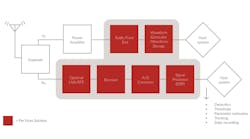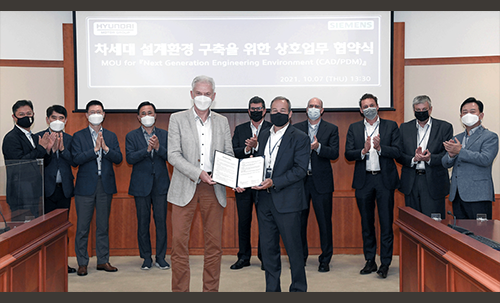中断和转换。全球电子ics distribution industry is up to its eyeballs in both. Global supply chains must respond to disruptions at digital speed, component suppliers are consolidating at an unprecedented rate, product development is being democratized, and new technologies are transforming business practices.
If a distributor isn’t deeply engaged in rethinking its business model, it risks being blindsided by more nimble competitors that may not even be on the radar.
William Amelio, chief executive of Avnet since September 2016, gets it. He’s been driving business transformation at the Phoenix, Ariz.-based global distributor since day one. Not yet a year into his tenure, with the company facing some challenging headwinds, Amelio remains firmly committed to the new course he set for Avnet in September. “The company will be a totally different looking company as we get through the end of the transformation,” he says.
Avnet is already getting harder to recognize. The company sold its Technology Solutions business to Tech Data Corp. in September for $2.6 billion, acquired Premier Farnell PLC, the 8th largest global distributor on theSourceToday2017 ranking, for £691 million in October 2016, and is deep into a two-year organizational restructuring process.
At the core of Amelio’s strategy is a laser focus on component distribution that expands customer engagements far upstream to the very early stages of the product design process. Through those early engagements, the new Avnet will work with customers in design and development and then hand the relationship off to Avnet’s traditional business of supplying components for high-volume production.
To deliver on this end-to-end model requires disruptive relationships. “Who are the potential disruptors; the companies we can partner with to help change the model?” Amelio asks. “It’s the aggregators, maker enablers, and engineering communities that allow you to gain influence on future designs with individuals that have a big impact on what happens with the future of electronics.”
Avnet is hard at work connecting the dots—and making strategic investments—that extend from the initial product idea to volume production. The company’s investments track the stages:
- Ideation:Avnet bought a majority interest inHackster.ioin November 2016 so it could connect with a global community of engineers and entrepreneurs that, together with the Premier Farnell community, numbers over 600,000.
- Design and development:A year ago, Avnet launchedMakersource, an ecosystem of services for engineers and entrepreneurs, to connect them with service providers to speed the development process.
- Prototyping:Premier Farnelland its U.S. company Newark/element14 connect with startups and developers to supply development boards and small-quantity parts orders of its suppliers’ products and technologies early in the product lifecycle.
- Production:Once demand for the product starts to grow and production starts to ramp, Avnet can provide supply chain resources, and plug the company into its high-volume distribution organization.
“With a low-cost service model, we can cast a really wide net to capture literally millions of customers so we are able to watch them carefully travel through their life journey,” says Amelio.
Near-term challenges
In late April, Avnet released itsquarterly financial resultsthat provides a glimpse into the distributor’s progress to date under Amelio and what it expects for fiscal year 2018, which starts July 1, 2017.
Results from the fiscal quarter include some positives: Overall organic revenue for the quarter grew 3.4% sequentially in constant currency, buoyed by strong organic growth in the EMEA market. And e-commerce investments put the company on a path for digital sales to exceed a $700 million annual run rate, thanks to better than expected revenue from Premier Farnell.
Avnet项目收入2017财政年度,ending July 1, 2017, to be in the $17.3 to $17.5 billion range, and fiscal year 2018, which ends June 30, 2018, to be in the $17.3 to $17.7 billion range. While not apples-to-apples, these forecasts are very close to Avnet’sfiscal year 2016component sales of $17.2 billion.
There are a few near-term challenges that are impacting top-line growth, according to Avnet. At the top of the list is the loss of key suppliers (such as Analog Devices) and changes to supplier programs (such as Texas Instruments, which reportedly has canceled demand-creation and fulfill programs with a number of distributors).
“Supplier consolidation has had a meaningful effect on distribution and we’ll have to weather that storm,” admits Amelio. “The good news is that we are starting to move into a growth era. As the market improves, [suppliers] will need us out there to help with the designs.”
Another near-term challenge Avnet reported in its quarter report was a plan to embark on a global IT makeover, including replacing the company’s North American enterprise resource planning (ERP) system. Avnet says the project could take up to two years and cost between $75 million and $125 million. The upgrade will “enhance the customer experience, lower operational cost and improve global analytics,” according to Avnet.
While these benefits are in line with the company’s focus on digital transformation, the makeover will negatively impact the company’s financials to the tune of about $18 million a quarter over the next eight quarters as Avnet accelerates the depreciation of the North American EPR system, according to the company.
Avnet estimates that supplier actions will shave approximately $1 billion off the estimated revenue range for 2018, which will be offset by a $600-$700 million contribution from organic growth and a $400-$500 million contribution from Premier Farnell.
Despite these challenges and the prospect of slow and no top-line growth in the coming year, Amelio remains confident that Avnet’s investments in digital tools and the company’s transformation initiatives will streamline operations. “This will position Avnet for future profitable growth in a rapidly changing digital supply chain environment,” he says.
William Amelio, Avnet CEO, On the Record
On identifying Avnet’s value drivers
“Back in September we enlisted the support of a partner to work with us to view the company as if they were a private equity firm and extrapolate our data over an eight-week period to determine where the value drivers were across the company.
“At the end of the eight weeks, we had identified 10 work streams and 450 different projects that are in play. The concept is that we have unlocked an innovation engine like no other in the company’s history.”
One project Amelio referenced was single point of purchasing.
“Instead of having five people negotiating with a supplier on terms and conditions and pricing, we only have one. It’s a simple idea. We can more efficiently manage inventory across the world so we have visibility everywhere as opposed to just having regional visibility.
“50% of the projects are more revenue- and growth-related than they are cost-related. Whenever you have a growth project it’s easy to get people excited.”
On centralized versus decentralized
“Historically, Avnet was managed as a very decentralized company, which served us extremely well, enabling us to gain market share and be an effective distributor across the world. However, the downside of a strategy like that is you don’t share best practices as freely as you need to and it’s very difficult to get a corporate initiative implemented.
“With this [new] strategy, we’ve been able to get a lot of best practices moving across the company as fast as possible. So, over the course of the next 12 months or so, we will have implemented [a lot] of the transformation work.”
On utilizing digital technologies
“We are [using] IBM Watson for big data analytics. We get an unbelievable amount of data that can tell us the way the market is moving, where the big ideas really are, and where we should be investing.
“One of the ways we are monetizing it, is by putting the service on our websites. We have an intelligent assistant on all four of our sites: Hackster.io, Makersource, Premier Farnell and Avnet. We don’t want one monolithic site, we want multiple sites so we can seamlessly guide the customer through their journey and serve up information as they need it.”















